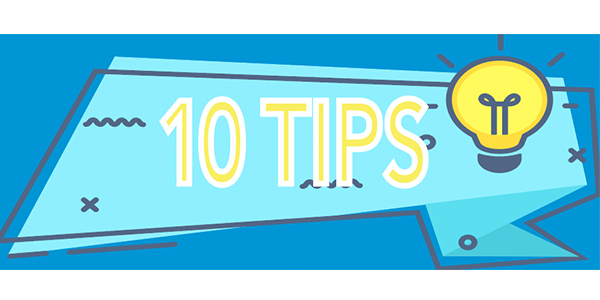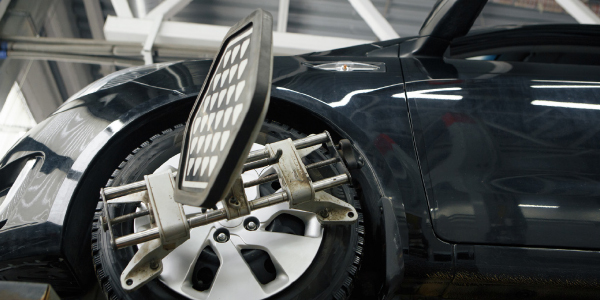
1. Talk to the driver. Always ask questions when the vehicle is written up. Find out why customers think they need an alignment.
2. Take notes. Nothing is worse than a repair order that just says “perform alignment” or “needs alignment.” Notes on the repair order can prevent comebacks that stem from a customer’s complaint not being addressed.
3. Look at setback. Setback is a diagnostic angle that measures the difference in distances between the centers of the front wheels. An alignment can be performed that gets the toe, camber and caster close to tolerances, but still results in an issue once the vehicle is driven. The problem could be differences in the setback angle, which indicates damage in the frame or within components like control arms and bushings. Take a closer look at caster angles from side to side to see if there is a larger problem.
4. Look at ride height. Suspension angles are dynamic. As the body moves, the camber, caster and toe will change in the front and rear. OEMs tune these angles for the best tire wear and stability at a set ride height. If a spring is weak or missing a coil, the alignment angles will be off from these calculations.
5. Compare side to side. Sometimes a bent component is difficult to spot with the naked eye. If you see a caster, steering angle or SAI reading that is off, compare components on both sides. The key areas to observe are the steering arms, strut mounting points and control arms. Most chassis parts are designed to bend at strategic points to prevent damage to the frame or unibody in the event of a crash.
6. Look past the individual angles. Even if all of the angles are in the green, the car may still have an alignment problem. Interpreting the angles and thinking about how an angle on one side can “add up” to trouble on the opposite side is critical for avoiding comebacks. Positive camber on one side with negative camber on the other can add up to a pull, even if the specs are within tolerances because ±5° on both sides can add up to 10º.

7. Be aware of worn bushings. In the past decade, tire sidewalls have shrunk while a driver’s expectation of a smooth ride has stayed the same. To compensate for this, suspension bushings have increased in size, but these bushings can wear to the point that they will change alignment angles. On the alignment rack, the angles might be within specifications, but loads are put on the bushing during braking, accelerating and corning that could change those angles. The most common sign of a worn bushing is inside edge tire wear and negative toe out.
8. Check TSBs. TSBs for alignment issues often have titles referencing tire wear and steering pull complaints. The majority of the TSBs focus on warranty procedures and what the OE will reimburse the dealer, but make sure you read between the lines. One TSB even told technicians to align a vehicle as close as possible to the specifications and ignore the tolerances. If there is a TSB or update to the “warranty procedures,” there is a problem.
9. Check for bent struts. One of the most difficult items to diagnose is a bent strut rod. To check for a bent strut shaft, loosen the large shaft nut at the top of each strut and rotate the shaft 360° while keeping an eye on the camber reading. If the shaft is bent, the top of the wheel will wobble in and out, and the camber reading will change as the shaft turns. No change in the camber reading means there’s nothing wrong with the strut. A strut with a bent shaft must be replaced because there’s no way to safely straighten this kind of damage. Attempting to bend a hardened shaft will likely crack it.
10. Don’t forget the tires. When doing your pre-alignment inspection, always check tire inflation pressures and tire sizes. A low tire will cause a pull, and a car will also pull toward the side with the smallest or widest tires. A wide tire offers greater rolling resistance than a narrower tire. Wide tires also tend to be more sensitive to road crown steer than narrower ones. A bias-belted tire offers more rolling resistance than a radial, which could also cause a steering pull if someone mixed tire types on the same axle. Because of faulty construction, a radial tire will sometimes take a directional set, creating a pull to one side.
Courtesy of Brake & Front End.














